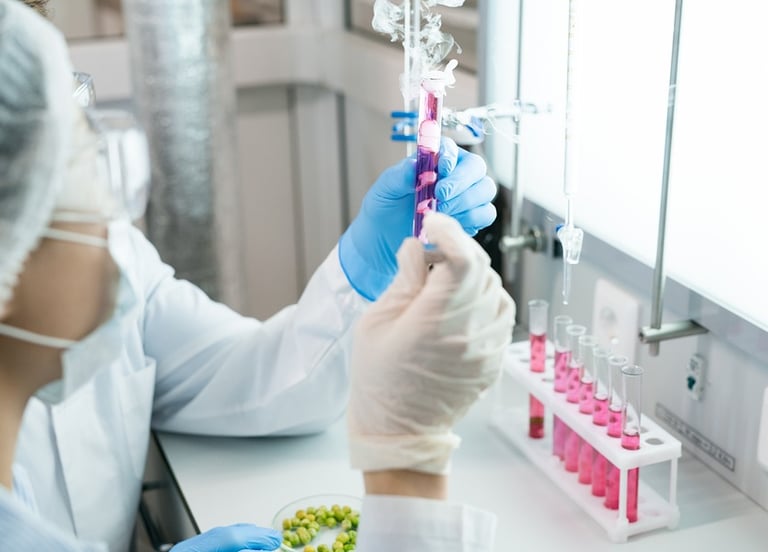
COSMETIC MICROBIOLOGICAL TESTING
Cosmetic Microbiological Testing is a series of tests conducted to determine whether cosmetic and personal care products are contaminated with microorganisms (such as bacteria, yeast, and mold) and to evaluate the microbiological safety of the products. These tests are of great importance to ensure that the products are microbiologically safe and of high quality during the process from the production stage to the consumer.
The Purpose of Cosmetic Microbiological Testing:
Protecting Consumer Health: Harmful microorganisms that may be present in cosmetic products can cause skin infections, eye infections, and other health problems. Microbiological tests aim to minimize this risk.
Ensuring Product Quality and Stability: Microorganisms can cause product spoilage, bad odor formation, and changes in color and consistency. Microbiological tests help to maintain the quality of products throughout their shelf life.
Compliance with Legal Regulations: Cosmetic products must comply with certain microbiological limits before they are placed on the market. These tests are carried out to verify compliance with legal requirements.
Verification of Good Manufacturing Practices (GMP): Microbiological tests are used to verify that the production environment and processes are carried out under hygienic conditions and that the risk of contamination is kept under control.
Verification of the Effectiveness of the Preservative System (Challenge Test): To check whether the preservative system in the product is sufficient to prevent the growth of microorganisms. (This test is covered under a separate heading as "Preservative Efficacy Test" or "Challenge Test.")
Which Microorganisms are Tested for in Cosmetic Products?
The main microorganisms tested for in cosmetic microbiological tests are:
Total Aerobic Mesophilic Bacteria Count: Indicates the general bacterial load in the product.
Yeast and Mold Count: Determines the amount of yeast and mold in the product.
Pathogenic Microorganisms:
Pseudomonas aeruginosa: A bacterium that can cause skin and eye infections.
Staphylococcus aureus: A bacterium that can cause skin infections and toxin production.
Escherichia coli: A bacterium that indicates digestive system infections and fecal contamination.
Candida albicans: A yeast that can cause skin and mucosal infections.


How are Cosmetic Microbiological Tests Performed?
These tests generally involve the following steps:
Sampling: A specific amount of sample is taken from the cosmetic product under aseptic conditions (using sterile equipment).
Dilution: The sample is diluted by mixing it with a sterile diluent in specific ratios.
Plating: A certain amount of the diluted sample is plated onto suitable culture media (agar plates or liquid media) for the growth of microorganisms.
Incubation: The culture media are incubated (kept) at a suitable temperature and for an appropriate period for the growth of microorganisms.
Counting and Identification: At the end of the incubation period, the microorganism colonies that have grown on the culture media are counted, and if necessary, species identification is performed.
Evaluation of Results: The obtained results are compared with the limit values specified in legal regulations and standards.
Test Methods and Standards Used:
The common methods and standards used in cosmetic microbiological testing are:
ISO 21149: Cosmetics - Microbiology - Enumeration and detection of aerobic mesophilic bacteria
ISO 16212: Cosmetics - Microbiology - Enumeration of yeast and mold
ISO 22718: Cosmetics - Microbiology - Detection of Staphylococcus aureus
ISO 22717: Cosmetics - Microbiology - Detection of Pseudomonas aeruginosa
ISO 18416: Cosmetics - Microbiology - Detection of Candida albicans
ISO 21150: Cosmetics - Microbiology - Detection of Escherichia coli
European Pharmacopoeia (Ph. Eur.)
US Pharmacopeia (USP)
Sources and related content
Contact Us to Begin Your Cosmetic Microbiological Testing Process.
We offer affordable and effective solutions tailored to your needs.
The information presented on this website does not constitute legal advice and is intended for informational purposes only. KompassEurope.com.tr assumes no responsibility for any errors or omissions in the information contained on this website. Any decisions made or actions taken by the reader based on this information are solely at the reader's own risk, and KompassEurope.com.tr shall not be held liable for any legal consequences arising from such decisions or actions. Readers are strongly advised to seek professional legal counsel regarding their specific circumstances and concerns.
© 2025 Kompass Europe. All rights reserved. The contents of this website belong to Kompass Europe and are protected by copyright laws. Copying, publishing, distributing or any commercial use of the information on the website is possible only with written permission. By using this site, you agree to our Terms of Use and Privacy Policy.
